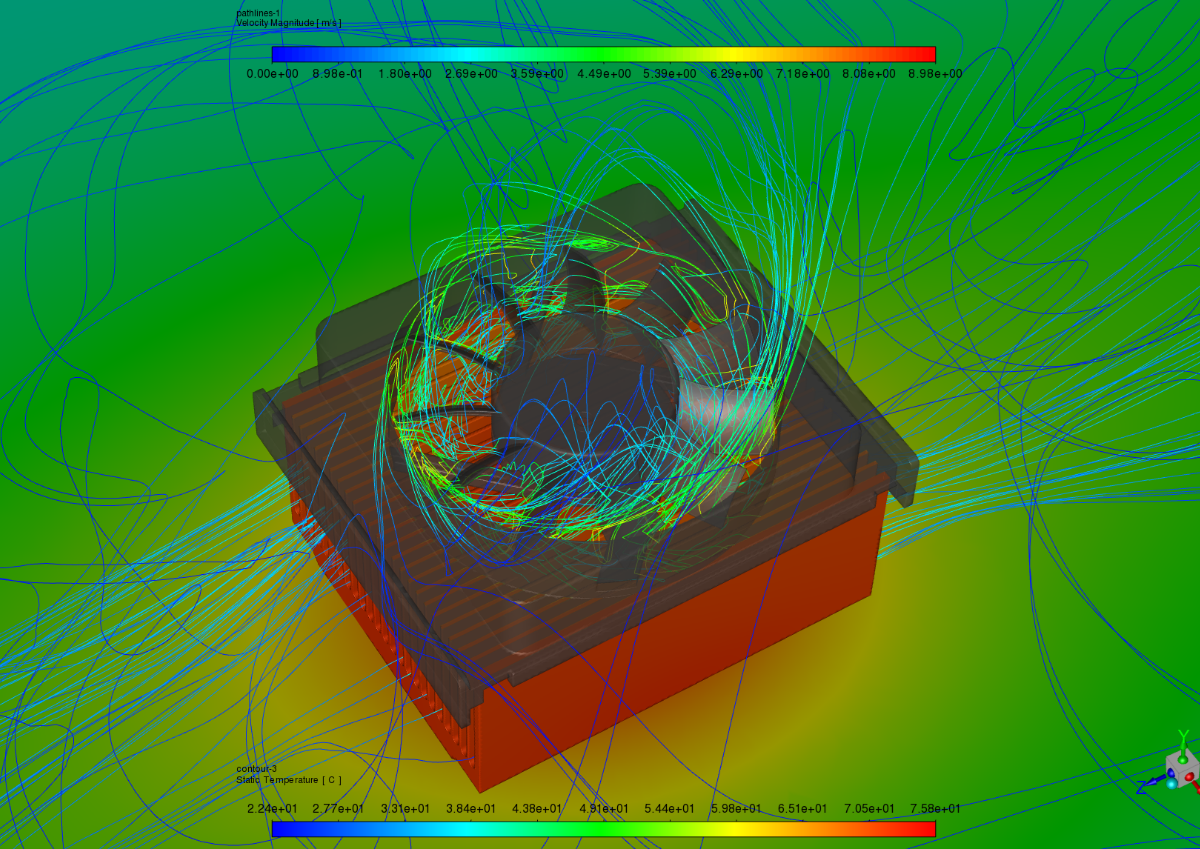Ansys CFD tools in 2021 have taken another large step forward in terms of model depth and workflow capabilities with the release of Ansys 2021 R1. Along with the dozens of new features in the main Ansys Fluent and CFX products, what may have escaped your attention is the availability of a new product, named “Ansys CFD-Pro”.
CFD-Pro provides you with the tools to tackle a range of common CFD applications at a significantly more affordable price than the full Ansys CFD Premium package, but uses the same modern Fluent workflow, meshing technology, and core Fluent solver that has been trusted by our customers worldwide for many decades. CFD-Pro also enables the “Refine” mode in Ansys Discovery, where a design that you have optimised upon using the “Explore” mode can be more accurately investigated in the Fluent solver, without needing to leave the Discovery interface. More details on Ansys Discovery are available here.
The focus of this blog is on the new Fluent-based CFD-Pro product. The following are some examples of applications you can solve today using Ansys CFD-Pro 2021 R1.
Turbomachinery
Ansys CFX has long been regarded as the best in class software for turbomachinery applications. Its wide range of applicability to devices like pumps, fans, compressors and turbines has helped significantly improve their performance. While CFX remains the best choice for multiple stage and some transient analyses, Fluent is more than capable when it comes to single-stage and steady state flows. CFD-Pro enables a frame change model that we investigated on a liquid pump analysis to get a feel for general predictions between CFX and Fluent CFD-Pro. It should be pointed out that this was an investigation of viability and workflow, not a rigorous analysis with mesh independence verified, although this would certainly be possible given the capabilities of watertight meshing available in CFD-Pro.
Having selected a pump geometry using Ansys BladeModeler at a good efficiency point, the computational mesh was built using Ansys TurboGrid + Ansys Meshing for the CFX case, and Ansys Fluent Watertight meshing for the CFD-Pro case.
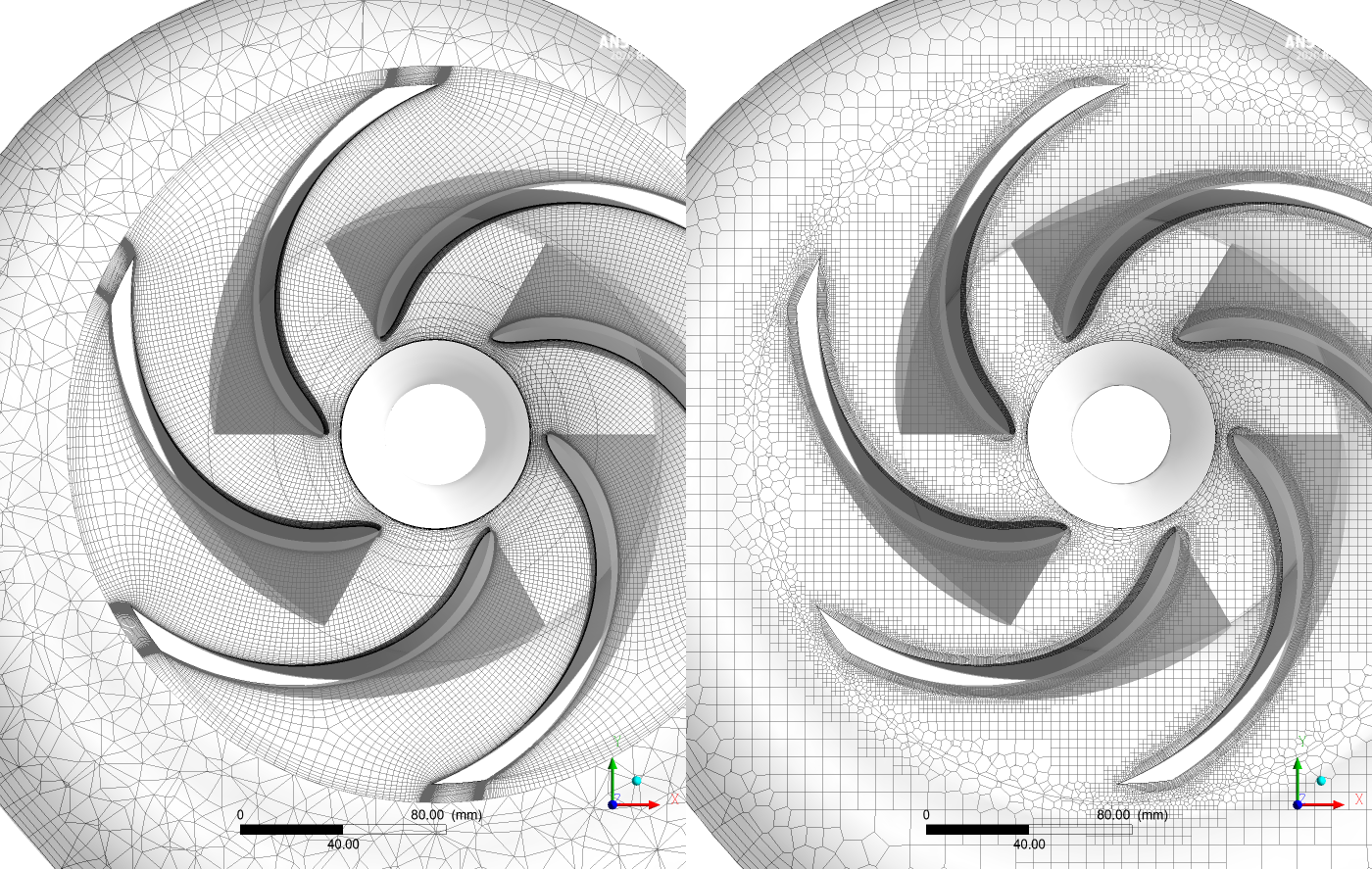
Image shows CFX mesh on the left and CFD-Pro mesh on the right.
For both cases, convergence was good, and there was good agreement between total pressure and velocity plots.
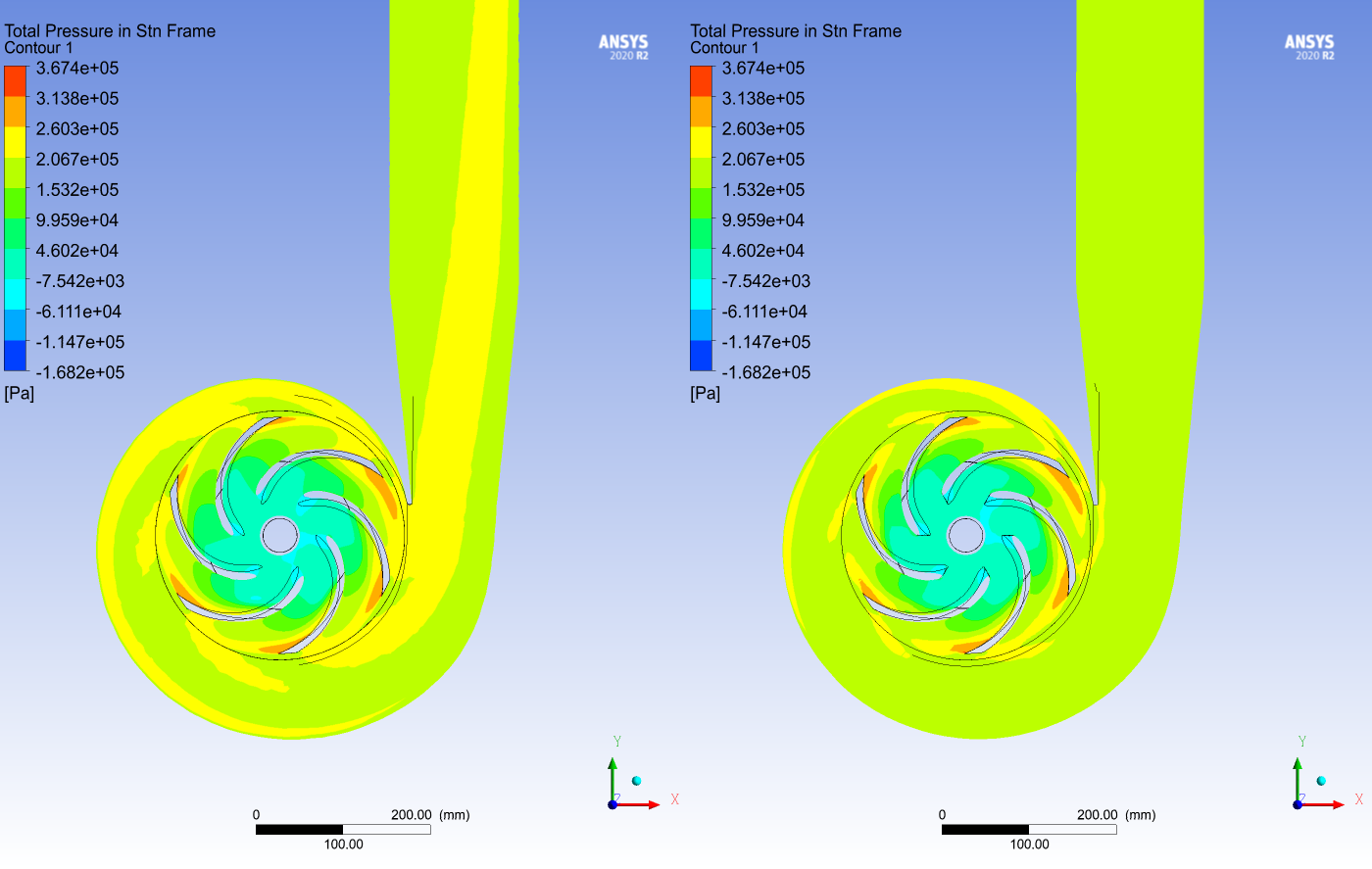
Image shows Stationary Frame Total Pressure values, CFX on the left and CFD-Pro on the right.
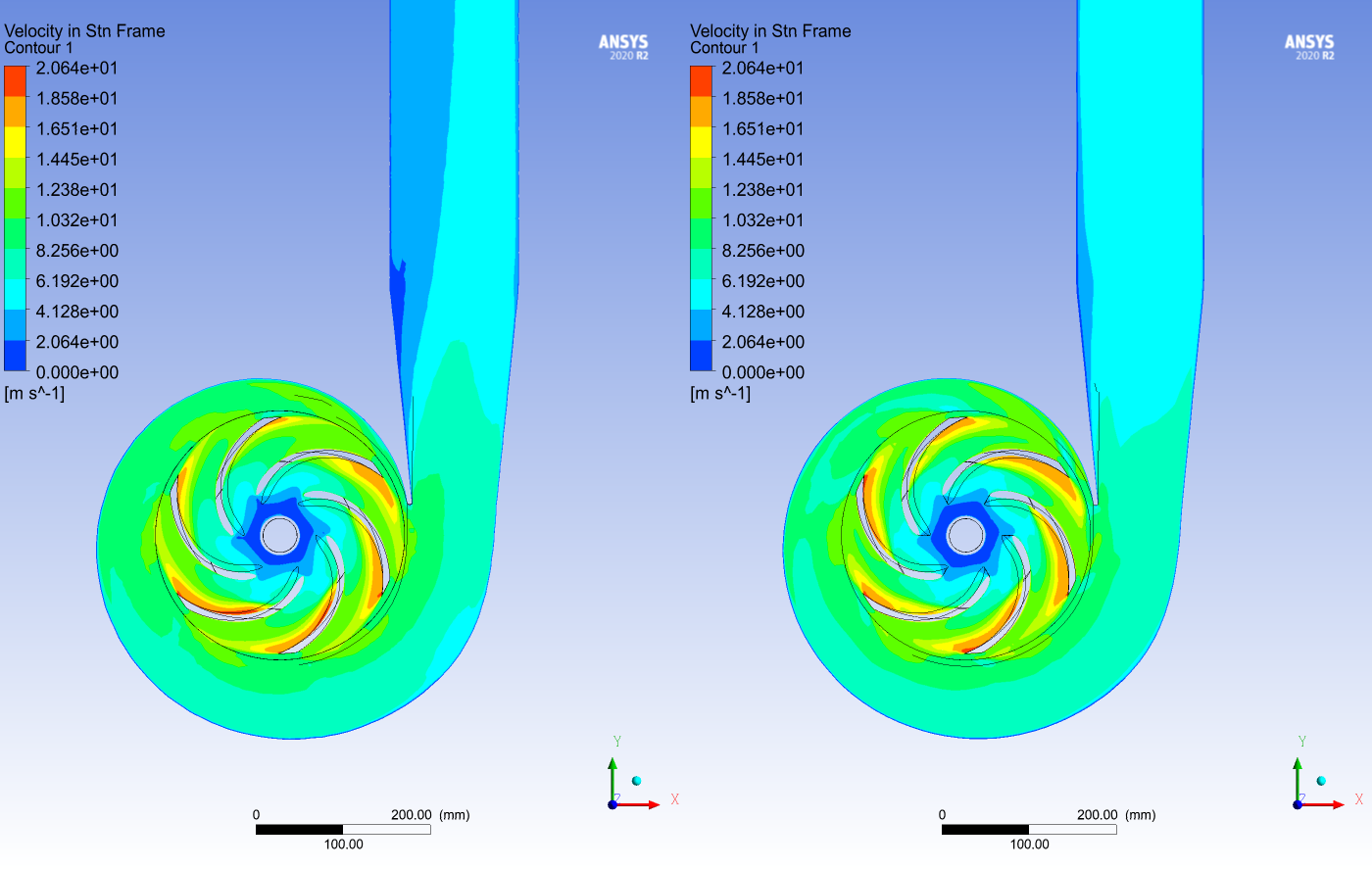
Image shows Stationary Frame Velocity values, CFX on the left and CFD-Pro on the right.
The results for head rise came in at 20.9 metres for CFX and 20.4 metres for Fluent, with a reference design head of 20.0 metres predicted by Ansys BladeModeler. Another test involving a fan was also carried out at LEAP and it too showed good agreement with CFX. In summary, the availability of a frame change model is an excellent inclusion to the CFD-Pro capabilities for anyone tackling simple rotating machinery problems such as those involving fans and pumps .
Air and Water Quality
The ability to model non-reacting species is available in CFD-Pro. This opens the door to many applications in air quality and water treatment. Some principal examples for air quality involve car parks, tunnel ventilation and mine shafts, where the distribution of a pollutant (such as carbon monoxide) needs to be studied and its concentration levels shown to be within regulations. Where a single phase study is applicable, chlorine dosing is a water treatment solution available in this release.
The example below shows smoke entry from upper equipment on a train carriage in a tunnel, which ventilation fans need to be able to disperse and keep from flowing forwards toward the main passenger platform. The smoke is modelled as an additional species, and the mass fraction of smoke is calculated as it undergoes advection and diffusion.
Note: check out the new post-processing feature in 2021 that allows you to embed multiple windows into the viewport!

One of the busiest areas that we have seen in HVAC over the last few years has been infrastructure in developing cities, which has included a large number of car park studies and rail projects, all of which need to satisfy requirements for occupant safety under normal and emergency conditions. The ability of CFD-Pro to readily mesh complex geometries easily, to work with expressions [link to expressions blog] when prescribing flow conditions, coupled with its latest post-processing advancements makes CFD-Pro a very attractive proposition for validating and modifying early designs, saving time and money.
Thermal applications
Another area that has seen significant investment in infrastructure is thermal applications. These can extend from traditional HVAC where thermal comfort or equipment cooling is a primary objective, to coupled systems such as heat exchangers, including solid and fluid components.
Here we’ll combine a few of the capabilities to look at forced convection cooling of a CPU using a heat sink and fan. Rotating frame and conjugate heat transfer come together in this one, along with some materials for the fan, housing and motherboard sourced directly from the Ansys Granta MDS library.
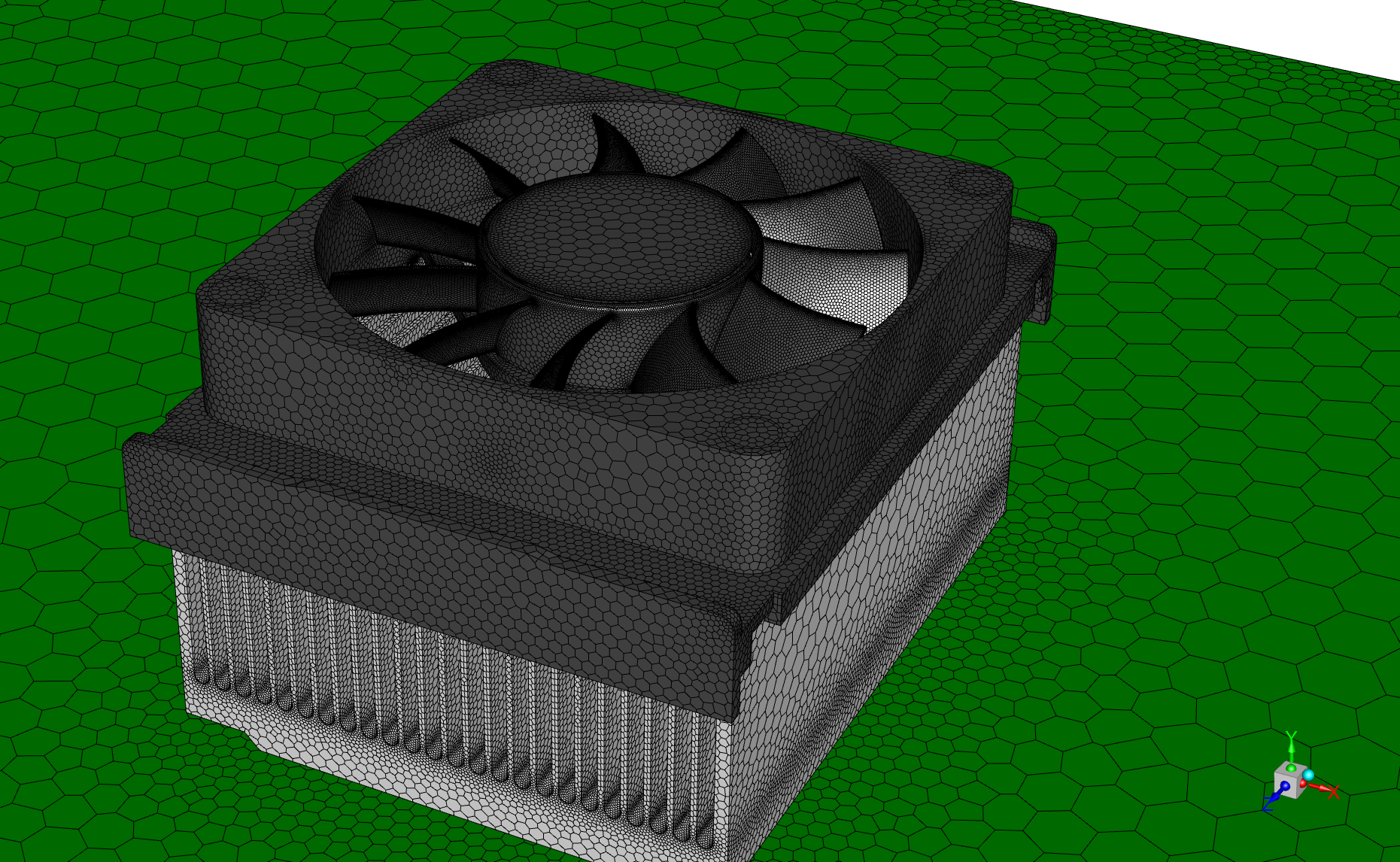
The CPU was set up with a source of heat equivalent to 170 Watts (near to full load), and the fan rotating at 1800 RPM. CPU temperature levelled out at approximately 75 degrees C.
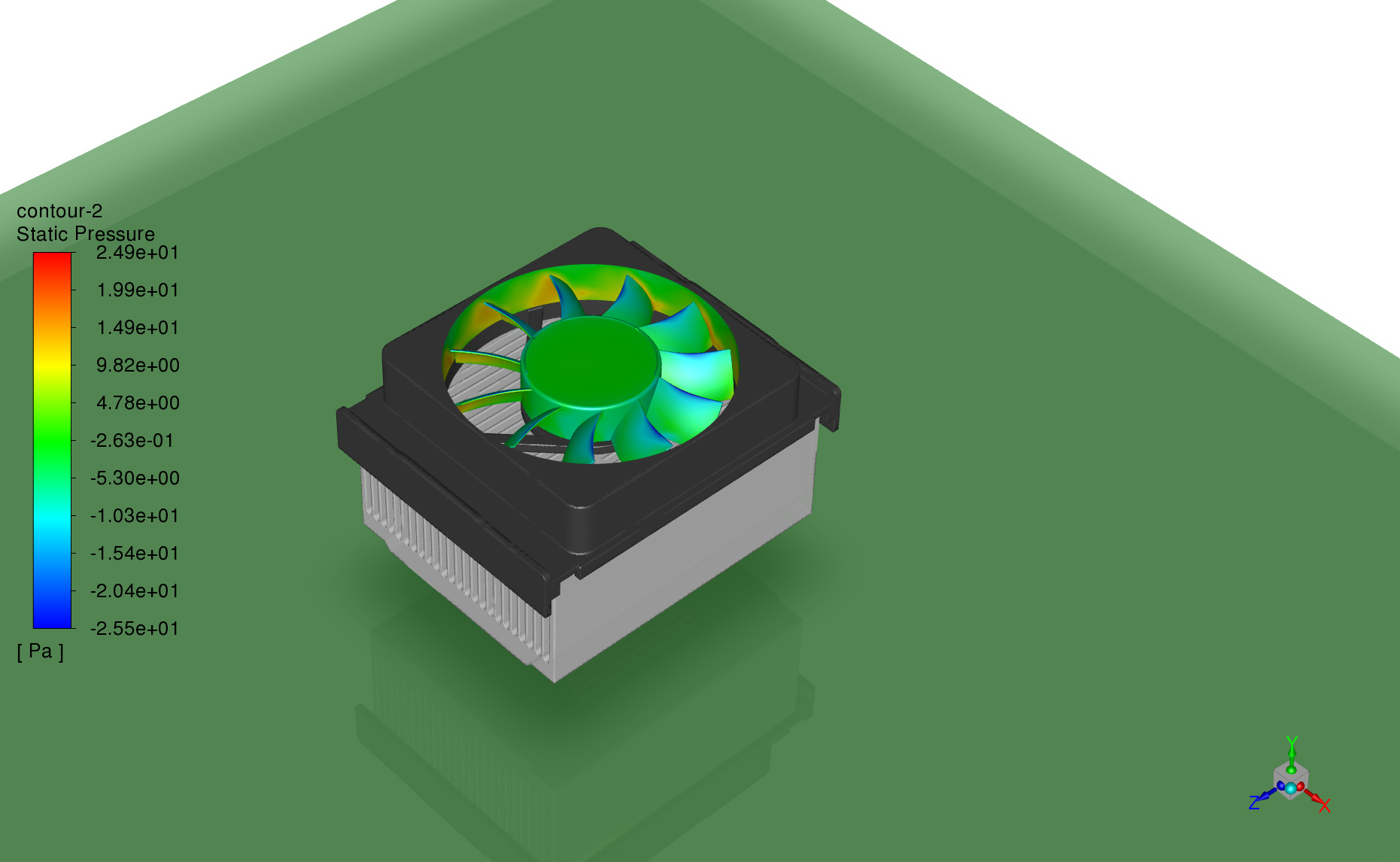
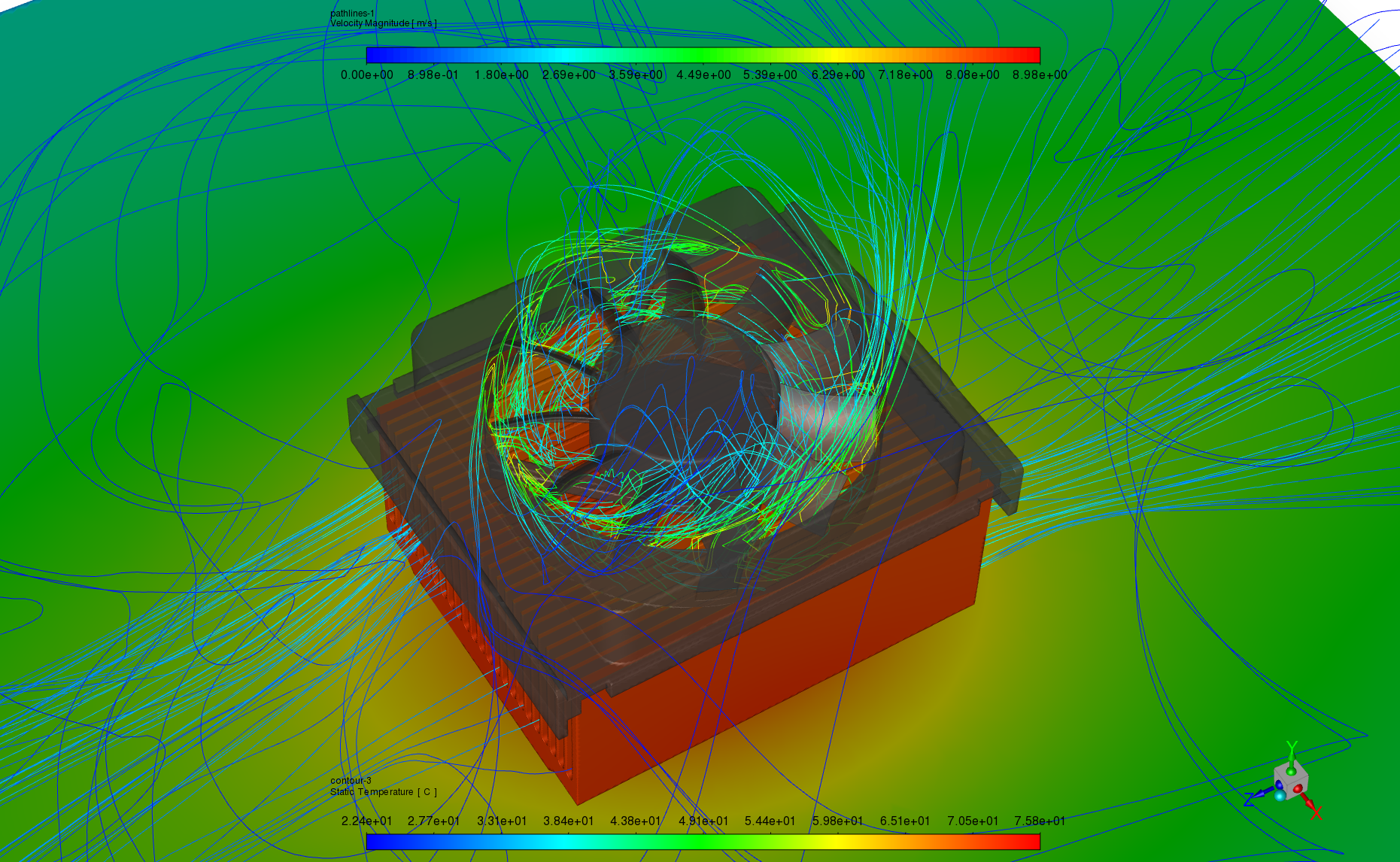
It’s worth remembering that although we are showing some examples with plots at a high level, the advantage with CFD-Pro is that these cases can be taken to a much higher level of fidelity using the meshing tools and two-equation turbulence models. The ability to add HPC licenses and solve problems at near-linear speedup is available, and there are other inclusions such as compressibility and shell conduction that are available.
To discuss a specific project or to check if Ansys CFD-Pro is a good fit for your requirements, please contact LEAP’s CFD team to talk to one of your local engineers based around Australia and New Zealand.


